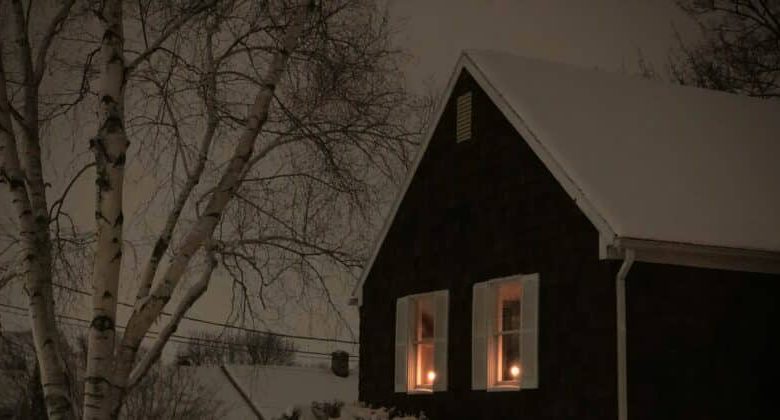Steps on How to Prepare Your Home For a Winter Storm

Winter storms can severely disrupt daily life and present challenges for homeowners. Preparing a home for harsh weather ensures safety and minimizes potential property damage. Understanding the essential steps to take can make a significant difference in protecting both property and your loved ones. This guide offers practical advice to help individuals prepare their homes for the upcoming cold months.
Inspect the Roof and Gutters
If you’re wondering, “How to prepare your home for a winter storm?”, start with a home inspection. Before winter arrives, a comprehensive roof inspection is of utmost importance. Check for any loose or missing shingles, as they can cause leaking. Gutter cleaning to avoid ice dams. Ground that allows proper drainage is essential to prevent damage caused by water. Addressing these issues early can save you from expensive repairs when the storm hits.
Seal Windows and Doors
Use weatherstripping or caulk to seal any gaps around windows and doors. Sealing the gaps is a simple yet effective way to prevent heat loss. You can also consider installing optional storm doors and windows for added protection. By keeping the heat contained, you can maintain a cozy indoor environment and lower your energy bills all season long.
Check Heating Systems
It is essential to have a professional perform this task to ensure the proper functioning of the heating system. Have the professional clean the filters, check for potential leaks, and ensure the system is working properly. With proper maintenance, your system will deliver heat precisely when you need it. It can also come from other sources, such as space heaters, which can be used as an additional source of heat if needed.
Prepare Emergency Supplies
Having the necessary supplies can be a lifeline in a storm. Gather items such as torches, batteries, warm blankets, and non-perishable foods. Ensure you are prepared for a power outage or other emergencies by having an emergency kit. Having these supplies on hand helps keep the household safe and comfortable.
Trim Trees and Branches
Branches that hang over roofs pose a significant risk if substantial snow and/or ice accumulate. If they are close to the house, cut them to prevent damage to your house. If you don’t cut them, limbs can fall and shatter windows or leave dents in roofs. Keeping trees and shrubs trimmed not only eliminates safety hazards but also maintains their appearance on the property.
Insulate Pipes
When pipes freeze, they can cause major water damage. Ensure that your exposed pipes are insulated or, at the very least, that you have them insulated in your basements, attics, and crawl spaces to prevent freezing. Wrap with pipe insulation or heat tape to maintain an even temperature. These tips can help homeowners avoid expensive fixes and ensure their water supply runs reliably throughout the winter months.
Review Insurance Coverage
Take time to review your homeowner’s insurance policy regarding storm-related damage. Check coverage for alignment with exposure. You may also want to add riders for limited protection, such as flood or wind loss. When the detail of a policy is known, it alleviates concerns and simplifies the claims process, should it be required.
Smoke And Carbon Monoxide Detectors
During the winter months, safety devices are of utmost importance. Check smoke and carbon monoxide alarms to ensure they are working properly. Change your batteries every year, and when you do, think about upgrading to smart detectors if yours don’t already have them. These precautions can help ensure that no accidents occur and that no household members are exposed to any hazards.
Maintain Driveways and Walkways
Ensure that access to the home is clear and safe. Shovel snow off, and sprinkle ice melt to avoid slips, trips, and falls! Invest in better snow removal tools or consider hiring a professional to handle the task for you. Clearing pathways prevents injuries from falling as family members and guests pass by.
Create a Communication Plan
Family safety includes a communication plan. Establish a meeting place and know who to call in case of an emergency. Talk about contingencies like an electricity cut or an evacuation. It also ensures that everyone knows what to do in the event of a disaster.
Secure Outdoor Furniture and Decorations
Outdoor objects could become projectiles in high winds. Move or secure furniture, grills, and decorations to prevent them from becoming damaged. We recommend putting heavy-duty tarps down or putting items in the garage or shed. Storing items outside helps homeowners keep their property, as well as surrounding sidewalks and roadways, from being potentially hazardous during damaging weather.
Stay Informed
Staying informed about upcoming forecasts is crucial for effective preparation. Get information and warnings only from trustworthy sources. Enroll in local emergency notifications for important updates. Knowledge is the key to keeping yourself and your family safe, and it also helps you make informed preventive decisions when a storm is approaching.
Conclusion
Winter storms can bring freezing temperatures and significant snow, but there are practical steps families can take to ensure their homes and families are both safe and warm. However, by checking the roof, sealing windows, and preparing heating systems, homeowners can confidently face the season. These best practices protect property as well as peace of mind, allowing people to enjoy the cold months with a sense of security.




